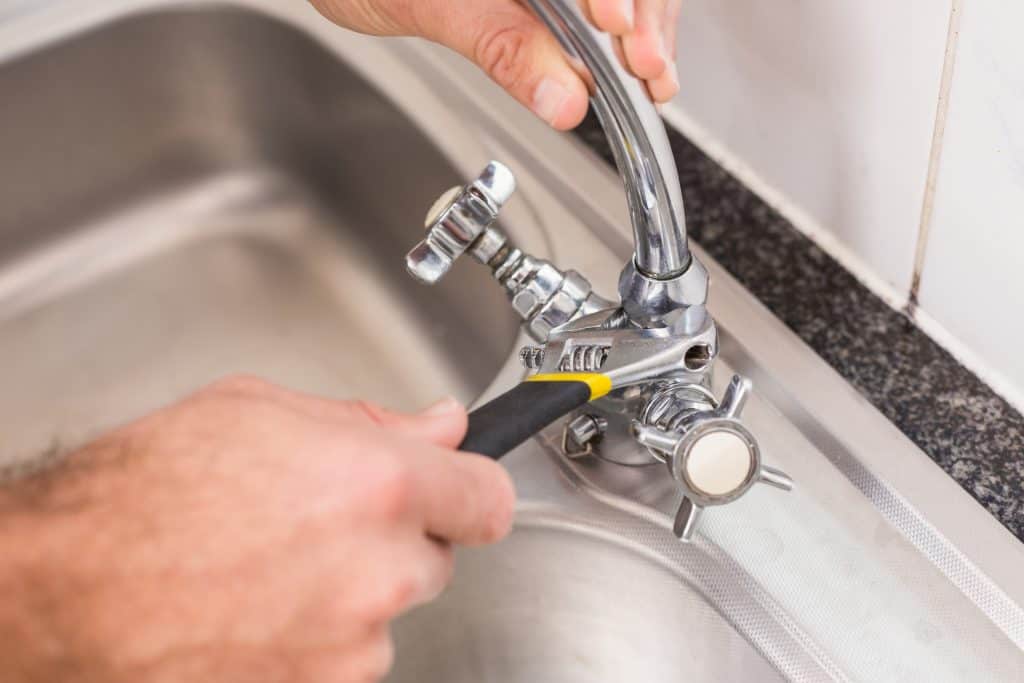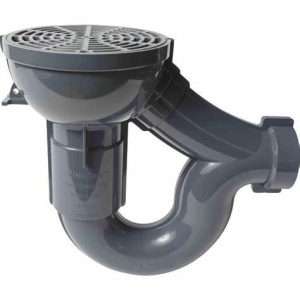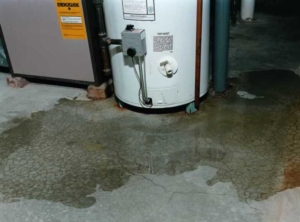How to Fix a Loose Sink Faucet: A Step-by-Step Guide

Is your sink faucet feeling loose and wobbly? Don’t worry, you’re not alone. A loose sink faucet can be a frustrating problem to deal with, but fortunately, it’s a common issue that can be easily fixed. In this blog post, we’ll explore the causes of a loose sink faucet and provide you with simple steps to tighten it up. With our helpful tips, your faucet will be sturdy and secure in no time. So, let’s dive in and get your sink faucet back in tip-top shape!
What is a Loose Sink Faucet?
Understanding the Problem
A loose sink faucet is typically caused by wear and tear over time or incorrect installation. When a faucet becomes loose, it can affect the functionality and overall stability of the fixture. It may be more noticeable when turning the handles, as there can be excessive movement and a lack of control.
Potential Risks and Inconveniences
1. Water Leaks
One of the primary risks associated with a loose sink faucet is the potential for water leaks. When the fixture is not securely attached, it can result in water seeping through the gaps between the faucet and the sink or countertop. These leaks can lead to water damage, which can be expensive to repair and may even cause mold growth if left unaddressed.
2. Difficulty Controlling Water Flow
A loose sink faucet can also make it challenging to control the water flow properly. The excessive movement of the handles can cause water to splash or spray in unintended directions. This can make tasks like washing dishes or filling a pot more difficult and messy.
3. Increased Wear and Tear
When a faucet is loose, the constant movement and vibrations can lead to increased wear and tear on the fixture itself. This may result in a shorter lifespan for your faucet, requiring you to replace it sooner than expected. Additionally, the repeated movement can cause other components within the faucet to loosen or break, exacerbating the problem further.
4. Difficulty Achieving Optimal Water Temperature
Another inconvenience of a loose sink faucet is the challenge of achieving and maintaining the desired water temperature. The movement of the faucet handles can make it difficult to find the perfect balance between hot and cold water. This can be especially frustrating when you rely on precise temperature control for tasks such as washing your hands or taking a shower.
Diagnosing a Loose Sink Faucet
Identifying the Cause
When your sink faucet becomes loose, it could be due to various reasons. Identifying the cause is the first step in resolving the issue effectively. Here are some common causes to consider:
- Worn out or damaged components: Over time, the components of a sink faucet can wear out or become damaged, leading to a loose fit. This includes the handle, spout, and internal mechanisms.
- Loose mounting hardware: The mounting hardware that secures the faucet to the sink or countertop can become loose over time. This can result in a wobbly faucet that needs to be fixed.
- Faulty installation: Improper installation of the faucet can cause it to become loose. If the faucet wasn’t installed correctly or the connections weren’t tightened adequately, it can lead to instability.
- Water pressure issues: In some cases, high water pressure can put undue strain on the faucet and cause it to become loose. This is more common in areas with high water pressure or if a pressure regulator is not installed.
Tools Required for Diagnosis
To properly diagnose and address the issue of a loose sink faucet, you will need the following tools:
- Adjustable wrench: An adjustable wrench is essential for loosening or tightening nuts and bolts.
- Screwdriver set: Having a set of screwdrivers with different types and sizes will allow you to remove screws and access various parts of the faucet.
- Plumber’s tape: Plumber’s tape, also known as Teflon tape, is used to secure the connections between the different components of the faucet, preventing leaks and promoting a proper fit.
- Flashlight: A flashlight will help you inspect hard-to-reach areas under the sink to identify any hidden issues that may be causing the faucet to loosen.
- Penetrating oil: If the faucet is stuck or difficult to remove, applying penetrating oil can help loosen the components and make disassembly easier.
Fixing a Loose Sink Faucet
Step-by-Step Guide
- Turn off the water supply: Before you start working on your sink faucet, shut off the water supply valves located beneath the sink. This will prevent any water leaks and potential accidents.
- Inspect the faucet handle: Examine the handle to identify if it’s the source of the looseness. If the handle is loose, there may be a set screw underneath that needs tightening. Use an appropriate screwdriver to secure the set screw.
- Check the base of the faucet: If the handle is not the problem, the issue might lie with the base of the faucet. Locate the base and inspect it for any loose components. Use an adjustable wrench to tighten any loose nuts or screws. Be cautious not to overtighten, as this could cause damage.
- Examine the cartridge or valve: The cartridge or valve inside the faucet may also be a culprit. To reach it, you will typically need to remove the handle and any decorative caps. Check if the cartridge is loose or worn out. If it’s loose, tighten it. If it’s damaged, consider replacing it with a new one.
Replacing Faulty Parts
If tightening the handle, base, and cartridge doesn’t solve the problem, it’s possible that some parts of your faucet are faulty or worn out. In such cases, replacing the faulty parts may be necessary. Here are some common parts that may need replacement:
- O-rings: These small rubber rings are located at the base of the faucet spout and can deteriorate over time. If your faucet is leaking from the spout, replacing the o-rings may solve the issue.
- Washers: A washer inside the faucet handle can wear out, causing a loose handle. Replace the washer with a new one to restore stability.
- Cartridge or valve: If the faucet continues to be loose after trying the previous steps, the cartridge or valve might need to be replaced. Consult the manufacturer’s instructions or seek professional help to ensure you choose the correct replacement part.
Tightening Loose Connections
Loose connections can also contribute to a wobbly sink faucet. Here’s how you can tackle this issue:
- Inspect the supply lines: Check the supply lines that connect to the faucet. Make sure they are securely fastened by tightening the nuts or fittings with an adjustable wrench.
- Examine the mounting nuts: Locate the mounting nuts underneath the sink and ensure they are tightly secured. Use an adjustable wrench to tighten them if necessary.
Remember, if you’re unsure or uncomfortable performing these tasks yourself, it’s always wise to seek professional assistance to avoid causing further damage.
Preventing a Loose Sink Faucet
Regular Maintenance Tips
To maintain a stable and secure sink faucet, you should perform the following maintenance tasks:
- Tighten the Base Nut: Over time, the base nut that holds the faucet securely in place can become loose. Use an adjustable wrench to tighten the base nut, ensuring a snug fit without over-tightening.
- Check the Handle Screws: The screws that secure the faucet handle can also loosen over time, leading to wobbly handles. Regularly check and tighten these screws with a screwdriver to maintain stability.
- Inspect the Water Lines: Examine the water lines beneath the sink for any signs of leaks, corrosion, or damage. If you notice any issues, such as leaks or loose connections, address them promptly by tightening or replacing the affected parts.
- Clean Faucet Components: Regularly clean the faucet components, including the spout, handles, and aerator, to prevent the buildup of mineral deposits and grime. Use a mild soap solution and a soft cloth to gently wipe the surfaces clean, ensuring smooth operation and reducing the chances of looseness.
Choosing Quality Faucet Components
The choice of faucet components plays a crucial role in preventing a loose sink faucet. When selecting faucet parts, keep the following considerations in mind:
- Choose a Solid Base: Opt for a faucet with a sturdy and solid base that provides stability. Look for faucets with reinforced metal or solid brass construction, as they tend to be more durable and less prone to loosening over time.
- Consider Ceramic Disc Cartridges: Faucets equipped with ceramic disc cartridges offer superior durability and longevity compared to traditional rubber washers. These cartridges provide smooth operation, reducing the chances of wear and tear that may lead to a loose faucet.
- Look for Quality Seals and O-rings: Pay attention to the quality of seals and O-rings used in the faucet. High-quality materials, such as silicone or nitrile, are more resistant to deterioration and can ensure a tight seal, preventing leaks and potential loosening.
- Invest in a Reliable Brand: Choose faucets from reputable brands known for their quality and craftsmanship. Research customer reviews and ratings to ensure you’re investing in a reliable product that will withstand regular use without developing looseness.
When to Call a Professional
Signs of a More Serious Issue
If you notice any of the following signs, it’s a clear indication that your loose sink faucet problem may be more than just a minor annoyance:
- Persistent Leakage: If your faucet continues to leak even after attempting to repair it, there could be underlying issues such as a damaged valve or worn-out seals. These problems require the expertise of a professional plumber to diagnose and fix properly.
- Low Water Pressure: If the water pressure from your faucet has significantly decreased, it could be a sign of a larger plumbing problem. A professional plumber will be able to identify the root cause and address it accordingly, ensuring your faucet functions optimally.
- Strange Noises: Unusual noises coming from your faucet, such as rattling or squeaking, may indicate loose or damaged components within the fixture. Ignoring these sounds could lead to more severe damage, making it crucial to seek professional assistance.
Finding a Reliable Plumber
When it’s time to call a professional, finding a reliable plumber is essential. Here are some tips to help you find a skilled and trustworthy plumber:
- Ask for Recommendations: Reach out to friends, family, or neighbors who have recently had plumbing work done. Their firsthand experiences can provide valuable insights into local plumbers who are known for their expertise and reliability.
- Check Online Reviews: Utilize online platforms such as Google, Yelp, or Angie’s List to read customer reviews and ratings for different plumbing services in your area. Look for companies with consistently positive feedback and a track record of satisfactory work.
- Verify Licenses and Insurance: Ensure that any plumber you consider hiring is licensed and insured. This guarantees that they have met the necessary requirements and have the appropriate coverage to protect you and your property.
- Get Multiple Quotes: Reach out to several plumbers and request detailed quotes for the required work. This allows you to compare prices, services offered, and the estimated timeline for completion. However, remember that the cheapest option isn’t always the best – prioritize quality and reliability over cost alone.
Conclusion
In conclusion, a loose sink faucet can be a common and frustrating problem in many households. However, it is a relatively simple issue that can be fixed with a few basic steps. By identifying the cause of the looseness, such as a loose mounting nut or worn-out O-rings, homeowners can easily tighten or replace the necessary components to restore stability to their faucet. Regular maintenance and checking for loose parts can help prevent this issue from occurring in the future. Remember, if you are unsure or uncomfortable with making the repairs yourself, it is always best to consult a professional plumber to ensure the job is done correctly and efficiently.







